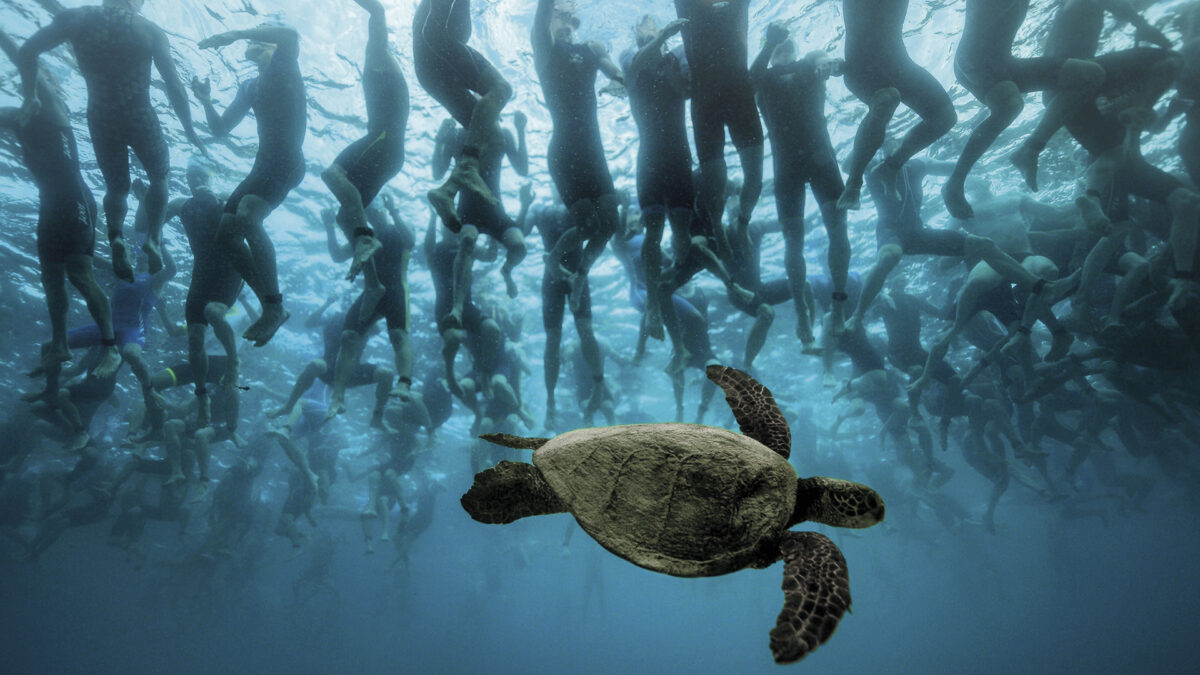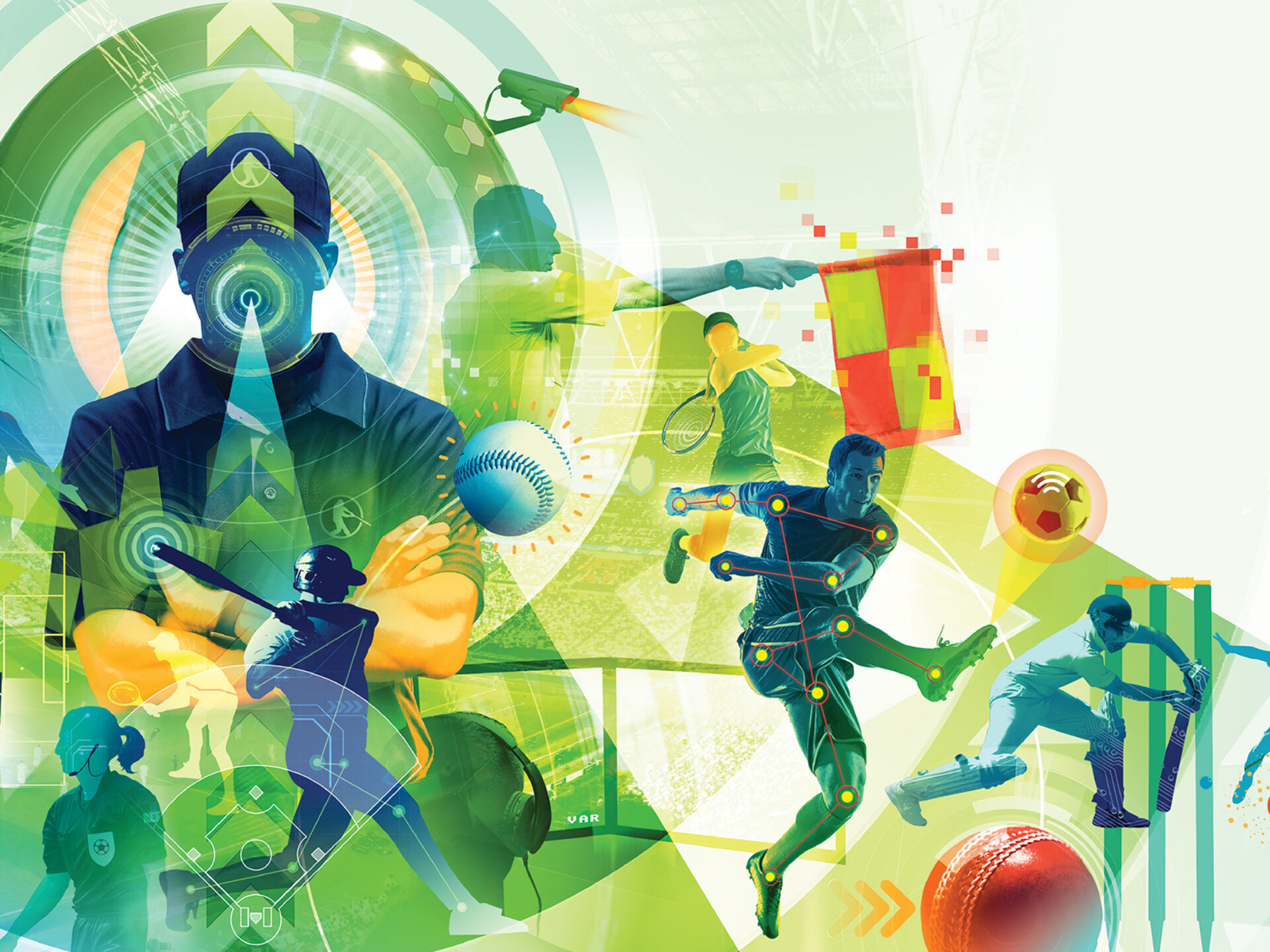Magazine

January 25, 2023

This article was originally published in Populous Magazine, our biannual publication featuring news and trends from the worlds of sport, entertainment, and major public events. Find out more, and subscribe for free, here.
Computerised ball and athlete tracking is being employed more and more in sports officiating. Will it improve sport for spectators and participants? And will the machines eventually take over from human officials?
Referees, umpires, timekeepers, touch judges… they’re all human and, therefore, they’re all fallible. Legitimate goals and touchdowns are occasionally disallowed; ace serves are sometimes wrongly called out; false starts might be overlooked. And because of the vast sums of money in professional sport, erroneous calls can have enormous impacts on teams or individual athletes.
Increasingly, computer technology that was first developed over 20 years ago, is now being used across multiple sports in an effort to eliminate such errors.
In 1999, after completing a PhD in artificial intelligence, university student Paul Hawkins landed a job with British tech company Roke Manor Research. A top amateur cricketer, he pitched an idea to his new company: a computer system that tracked the flight of a cricket ball.
It was a landmark moment in sporting history. What soon became known as Hawk-Eye made its debut in 2001 at a cricket test match between England and Pakistan. Thanks to this revolutionary vision system, viewers at home were able to track the cricket ball and ascertain whether it would have struck the stumps after an LBW (leg before wicket). Seven years later, after much debate and rigorous testing, Hawk-Eye was introduced into international cricket matches to help umpires with LBW decisions. Since those early days, Hawk-Eye has been used in sports as varied as tennis, soccer, badminton, athletics, Gaelic football, volleyball, horse racing, motor sport, field hockey, ice hockey, rugby, futsal, golf, baseball, basketball and American football.
Peter Irwin is global commercial director of the company Hawk-Eye Innovations, now based in the southern English city of Winchester. He explains to Populous magazine how it was a tennis match at the 2004 US Open between American players Serena Williams and Jennifer Capriati that proved to be the catalyst in accelerating the use of this computerised line-calling system across most professional tennis and would replace Cyclops two years later.
Another pivotal moment came at the 2010 FIFA World Cup in South Africa. England were trailing Germany 2-1 in the knockout stage of the tournament when England midfielder Frank Lampard had a perfectly legal goal ruled out because officials thought the ball hadn’t crossed the line. This incident opened the door for goal-line technology to be introduced three years later, paving the way for VAR (video assistant referee), which eventually made its FIFA World Cup debut in 2018.
Another machine on the rise is TrackMan, a robotic umpire that uses radar technology to judge strikes in baseball. Introduced this year into the highest level of Minor League Baseball, there is talk of it being used in Major League Baseball as soon as 2024.
Meanwhile, Hawk-Eye Innovations have developed a tracking system for MLB which monitors movement of the human skeleton, providing coaches and fans with data and analysis of individual players’ performances.
The system has also been adapted for soccer, and was introduced in September 2022 for the UEFA Champions League.
It was also used at the FIFA World Cup in Qatar. Here, each match ball included a sensor inside it, while 12 cameras in each tournament stadium tracked the individual players. Artificial intelligence then triggered immediate alerts whenever a player was offside.
As Irwin explains: “One criticism of video assistant referee was the time taken out of the game, particularly for offsides. So, we wanted to come up with a technology that could manage that situation and give a more accurate, more objective decision.”
In English Premier League soccer, human eyes are still required to analyse whether a player is onside or offside. “A hundred different people could all put that line in a different place,” Irwin adds. “We are now collecting 180 million data points across the 90 minutes (plus injury time) of a soccer match. And technology has got to the stage where artificial intelligence can objectively, particularly for black-and-white decisions, assess the positions of a player and the position of the ball much more reliably than a human can.”
That said, it hasn’t entirely done away with humans. Hawk-Eye call it “a semi-automated system” because it still requires an official to make the final decision.
"The more we can automate and objectify things the better. But it’s good to have that human aspect, and we’ve got the technology to support them.” Peter Irwin, Hawk-Eye Innovations"
Looking to the future, Irwin says his new skeleton-tracking system could result in more decisions by video assistant referee; handballs in soccer, for example. “We’re tracking where the ball hits the hand, the distance between the player and the ball, and the speed of the ball. And we can we provide this information to the referee. We won’t make the decision for them but we can give them more information so they can make a better-informed decision.
This raises the question of whether human referees and officials will eventually become extinct. Irwin thinks not, citing tennis as an example. He explains how Hawk-Eye enabled professional tennis to be staged soon after the global Covid pandemic since it precluded the need for multiple officials on the court’s edge, checking every line call. Even then, the chair umpire was still essential as a supervisor of the machines.
“The more we can automate and objectify things the better,” Irwin adds. “But I think it’s good to have that human aspect, and we’ve got the technology to support them.”
And, lest we forget, technology is not 100 per cent reliable either. In Gaelic football’s 2022 All-Ireland Senior Football Championship semi-final between Derry and Galway, Hawk-Eye was suspended at half-time after wrongly ruling that a point-scoring kick from Derry’s Shane Walsh had missed the target. The referee initially called it correctly. Then he changed his mind after the Hawk-Eye verdict. Finally, following a further video review, the point was reinstated.
Even when sports officiating is totally faultless, there is still another human element that technology cannot control. As Irwin says: “I’m a soccer fan myself. And fans don’t always want the right decisions. They just want the decisions that are right for their team.”
At the 2022 FIFA World Cup in Qatar, some extremely advanced computerised sports officiating was employed. In the centre of each match ball, a sensor – known as an inertial measurement unit sensor – sent data to video operators 500 times a second, allowing precise detection of kick points.
In addition, 12 cameras mounted beneath the roof of each tournament stadium tracked both the soccer ball and 29 data points on the limbs and extremities of each individual player 50 times a second, pinpointing their exact positions
on the pitch. “By combining the limb- and ball-tracking data, the new technology provides an automated offside alert to the video match officials,” FIFA explained. “This process happens within a few seconds and means that offside decisions can be made faster and more accurately.”
Once a decision had been confirmed by the referee, the data points generated a replay animation of the relevant player and the ball, which was then broadcast on TV and on the giant screens inside the stadium. FIFA hope the new technology will eventually be adopted by all professional soccer leagues worldwide.
Lorem ipsum dolor sit amet consectetur, adipisicing elit. Non facere corporis et expedita sit nam amet aut necessitatibus at dolore enim quis impedit eius libero, harum tempore laboriosam dolor cumque.
Lorem, ipsum dolor sit amet consectetur adipisicing elit. Illo temporibus vero veritatis eveniet, placeat dolorem sunt at provident tenetur omnis, dicta exercitationem. Expedita quod aspernatur molestias eum? Totam, incidunt quos.